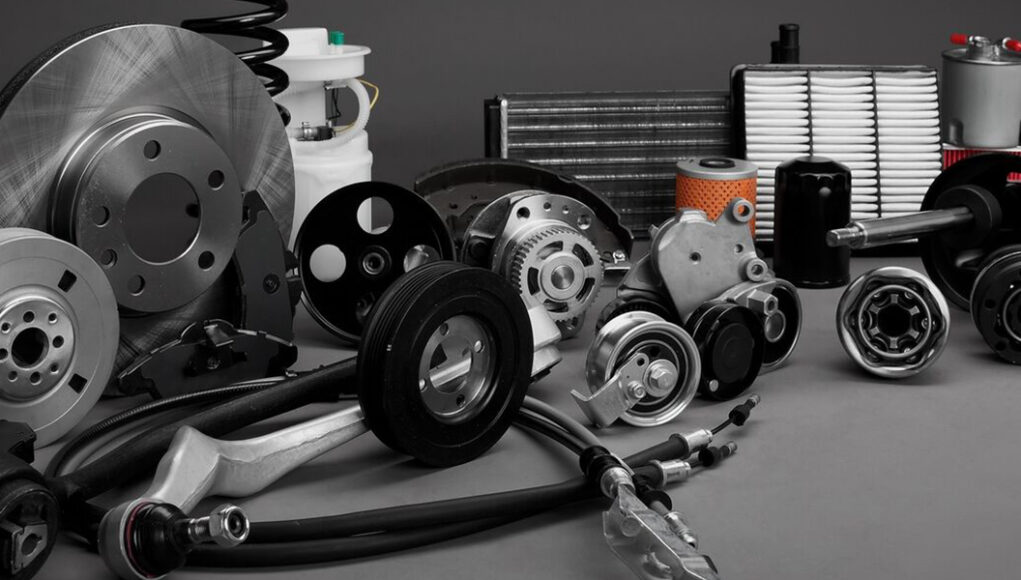When it comes to upgrading, repairing, or modifying your motorcycle, you have a choice of which kind of parts to purchase. The primary choice involves Original Equipment Manufacturer (OEM) parts versus aftermarket parts. The question is, which one is better?
What Are OEM Motorcycle Parts?
In the world of motorcycle manufacturing, very few motorcycle companies make 100 percent of their own parts and materials in-house. In other words, if you own a Yamaha motorcycle, the entire bike is not made of Yamaha-manufactured parts (also known as “genuine parts”). Many of the smaller components, engine elements, and nuts and bolts are sourced from outside companies. In other words, Yamaha vets and finds other companies that can supply these parts on their behalf. These are known as Original Equipment Manufacturer (OEM) motorcycle parts.
The Pros of OEM Motorcycle Parts
Warranty. One of the biggest advantages of buying OEM motorcycle parts is that they usually come with a warranty of some sort. Not only do the products and parts come backed with warranties, but the labor is usually covered as well (as long as it falls into a specific warranty period). However, there is a small catch here. In order to qualify for the warranty, you must continue to use OEM parts. If you install some aftermarket parts on your bike, it could void the warranty.
Less research. As you know, one of the most time-consuming and stressful parts of shopping for parts for your bike is trying to analyze and compare similar products from different companies. Not only do you have to assess compatibility, but you also have to compare features. With OEM parts, you don’t have to spend a single second stressing over this. Because of their stamp of approval, you can rest easy knowing the parts will work.
Peace of mind. At the end of the day, there’s peace of mind that comes with purchasing OEM motorcycle parts. You never have to wonder about whether or not you’re using the right products.
The Cons of OEM Motorcycle Parts
Higher price. You’ll almost always find that OEM parts are more expensive than aftermarket parts. In fact, you can usually expect to spend somewhere between 40 to 60 percent more. This premium price is attached to the brand name (and the motorcycle manufacturer’s stamp of approval).
Limited inventory. OEM motorcycle parts are in high demand. It’s not like you can just pop into a Walmart or any repair shop and find exactly what you need. There might only be a few websites or shops that have OEM parts for your bike. This limited availability means it can take time to find what you need.
Quality questions. Most people assume that OEM motorcycle parts are superior because they’ve been carefully selected by the motorcycle manufacturer. However, this isn’t necessarily true. While the quality can be better, quality issues are actually fairly common with some brands and types of parts. That’s because OEM parts are usually the first ones designed and created. By comparison, aftermarket parts are able to use the OEM version as a prototype and reverse-engineer it until they develop a superior option. Again, we’re not saying that OEM parts have poor quality – we’re just saying you shouldn’t automatically assume these parts are “head and shoulders” better
What Are Aftermarket Motorcycle Parts?
Aftermarket motorcycle parts are any parts that are made by third-party manufacturers that aren’t connected to the motorcycle brand or officially approved by them. In other words, they aren’t associated with or authorized to make parts for the motorcycle brand (though there’s nothing technically illegal about these parts).
Aftermarket parts manufacturers are not allowed to use the branding of the original parts at any time. In other words, they can’t pretend to be associated with the motorcycle brand in their marketing or advertising.
The Pros of Aftermarket Motorcycle Parts
Availability. It’s significantly easier to find aftermarket parts than OEM parts. This is because there are fewer restrictions on who can sell aftermarket parts (and where they can be sold). Any independent motorcycle shop can sell aftermarket parts with no problems.
Lower cost. Because aftermarket parts don’t have to go through a rigorous approval process, they’re typically less expensive to produce. Not only that, but there’s more competition in the aftermarket segment of the industry. This tends to drive costs down, resulting in less expensive options.
Quality (potentially). As previously mentioned, aftermarket motorcycle manufacturers are able to study the OEM parts and reverse-engineer them. In other words, they can study the product’s strengths and replace them. But they can also pull out the weaknesses and correct them. The result is a product that has the potential to be better.
The Cons of Aftermarket Motorcycle Parts
Quality (potentially). While quality could be better, we also have to mention the dark side of things. Because there’s no stringent certification process or approvals from the motorcycle manufacturer, it’s often difficult for customers to know when shortcuts have been taken or when questionable materials are used.
Lack of warranties. It’s rare that an aftermarket parts manufacturer will offer a warranty of any kind. And even if they do offer a warranty on the part itself, you should know that putting aftermarket parts on your bike could compromise any existing manufacturer warranties on the bike itself. Should your bike have any issues in the future, you may have to turn to independent repair companies.
Compatibility issues. When purchasing aftermarket parts, you have to be meticulous with your due diligence and research. Compatibility is a huge concern. Just because a company says their parts fit a certain bike make and model, doesn’t necessarily mean the fit is perfect. You’ll have to do your due diligence and vetting.
Find OEM Yamaha Motorcycle Parts
When you add it all up, OEM parts make the most sense when purchasing parts for your motorcycle. And if you’re looking for OEM Yamaha motorcycle parts, try YamahaPart.com. We have one of the widest selections of parts for different Yamaha motorcycle makes and models (stretching back to the 1960s).
Want to learn more? We’re always available by phone. Just call 908-237-0099 and we’ll be happy to help point you in the right direction!









